Hawker Hurricane Z2389 Restoration Project
Supercraft engineer component for Hurricane exhibit at Brooklands Museum
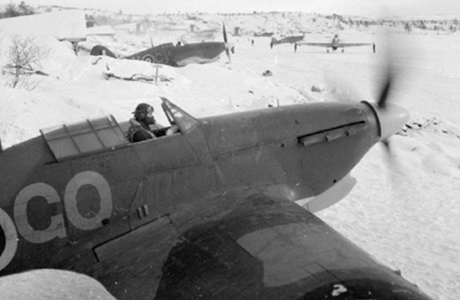
Royal Air Force Operations at Murmansk-Vaenga airfield in Russia, September-november 1941 Photo cortousy of Imperial War Museum
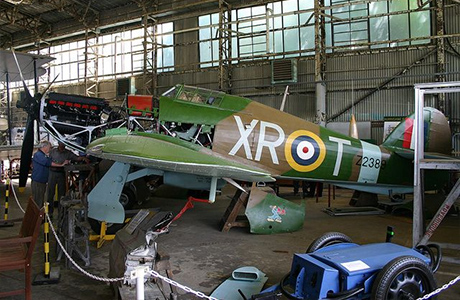
Hurricane Z2389 undergoing restoration at Brooklands Museum Photo by Alan Wilson
Hawker Hurricane Z2389, built at Kingston-on-Thames and test flown at either Langley or Brooklands, embarked on active duty in 1941 and flew for, amongst others, the all-American 71 Eagle Squadron based at RAF Martlesham Heath in Suffolk.
When Nazi Germany attacked the Soviet Union in June 1941, it quickly became apparent that the Soviet Air Force was not prepared for war. Poor planning and lack of organisation left planes sitting on the tarmac at airbases, allowing the Luftwaffe to destroy 4,000 Soviet planes within the first week. Joseph Stalin demanded help and Britain and its allies provided supplies including warships, tanks and warplanes, along with other weaponry under a lend-lease agreement that saw the Russian Red Air Force operate western-built fighters against the Luftwaffe. Over four million tons of supplies were delivered to the Russians. The most direct route was by sea, around northern Norway to the Soviet ports of Murmansk and Archangel. Although the supplies were valuable, the most important contribution made by the Arctic convoys was political. They proved that the Allies were committed to helping the Soviet Union, whilst deflecting Stalin’s demands for a ‘Second Front’ (Allied invasion of Western Europe) until they were ready. The convoys also tied up a large part of Germany’s dwindling naval and air forces.
In 1942 Z2389 was crated up, loaded onto a Russian merchant vessel and shipped to Murmansk in the Soviet Union. At the time lend-Lease aircraft from the US and UK accounted for nearly 12% of total Soviet air power. The convoy left for Murmansk on 21st May, 1942 with 35 vessels, subsequently falling prey to enemy action and loosing seven cargo ships along the way.
Z2389 commenced service with the Russian 767th Fighter Aviation Regiment in the inhospitable north Kola Peninsula, to do battle in the bleak, forbidding skies above the Barents Sea. However Z2389 was shot down on 20th June, 1942 during a fierce dogfight with two Messerschmitt Bf 109s and five Bf 110s. Z2389’s pilot, F/Lt Ivan Kalashnikov, survived after crash landing his stricken plane, where it lay for the next fifty years.
Like many wrecked aircraft abandoned in the wake of The Second World War, Kalashnikov’s aircraft was ultimately recovered and partially restored in St Petersburg. In 1997, after 55 long years, Hurricane Z2389 returned to the UK, arriving at Brooklands Museum in Surrey on 14th October, 1997 and became the first historic aircraft purchased with a Heritage Lottery Fund grant. Its restoration began in 1999 and the aircraft unveiled on the 75th anniversary of the first flight of a Hurricane, which coincidentally took place at Brooklands in November 1935.
Hurricane Mk IIA Z2389, resplendent in the green and brown camouflage colours of RAF Fighter Command, is currently under restoration to taxiing condition at Brooklands Museum near Weybridge, close in proximity to the Supercraft engineering facility in Byfleet. The aircraft is displayed as part of the ‘Brooklands in the Battle of Britain’ exhibition, telling the wartime story of Brooklands as a former Fighter Command base during the tumultuous summer of 1940, including the two air raids on the Brooklands site on the 4th & 6th September 1940.
Engineering the component
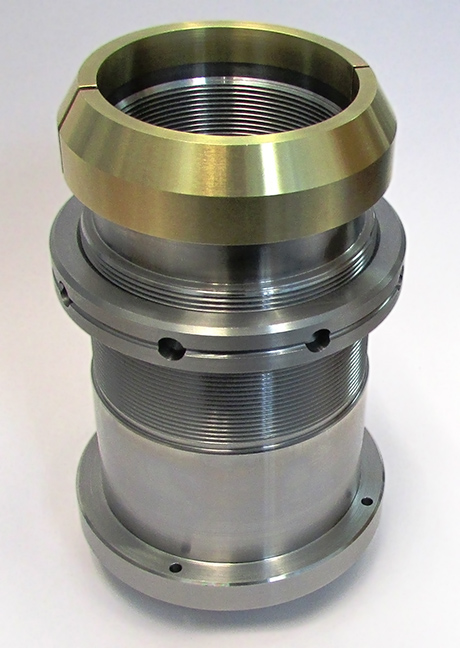
Machined part for Hurricane Z2389 Restoration Project Display
Brooklands required assistance to create an integral part for the Hurricane display. The large and intricate part is a central locking mechanism that forms part of the propeller display. Brooklands supplied the paper drawings and paid the £2000 material costs for the huge billet of steel. Supercraft provided the skilled labour to transform the paper drawings into a finished part. With such a large and expensive billet of raw material Supercraft could not afford to make any mistakes. Normally electronic drawings are programmed and tested in Vericut prior to manufacture but this job required an extra level of skill to translate the paper drawing into a machined component. The job was carefully planned one step at a time, machining the component within the tight tolerances required. Special tooling was created to enable manufacture and each cut programmed directly into the i200 NC milling machine. The propeller exhibit is on display now, next to Hawker Hurricane Z2389.
For further information and opening times,
visit Brooklands Museum website.
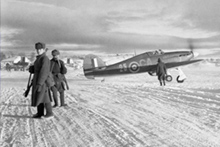
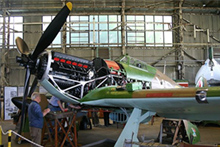
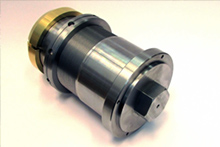
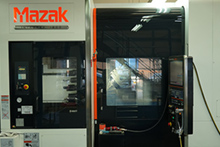
« News and Features
